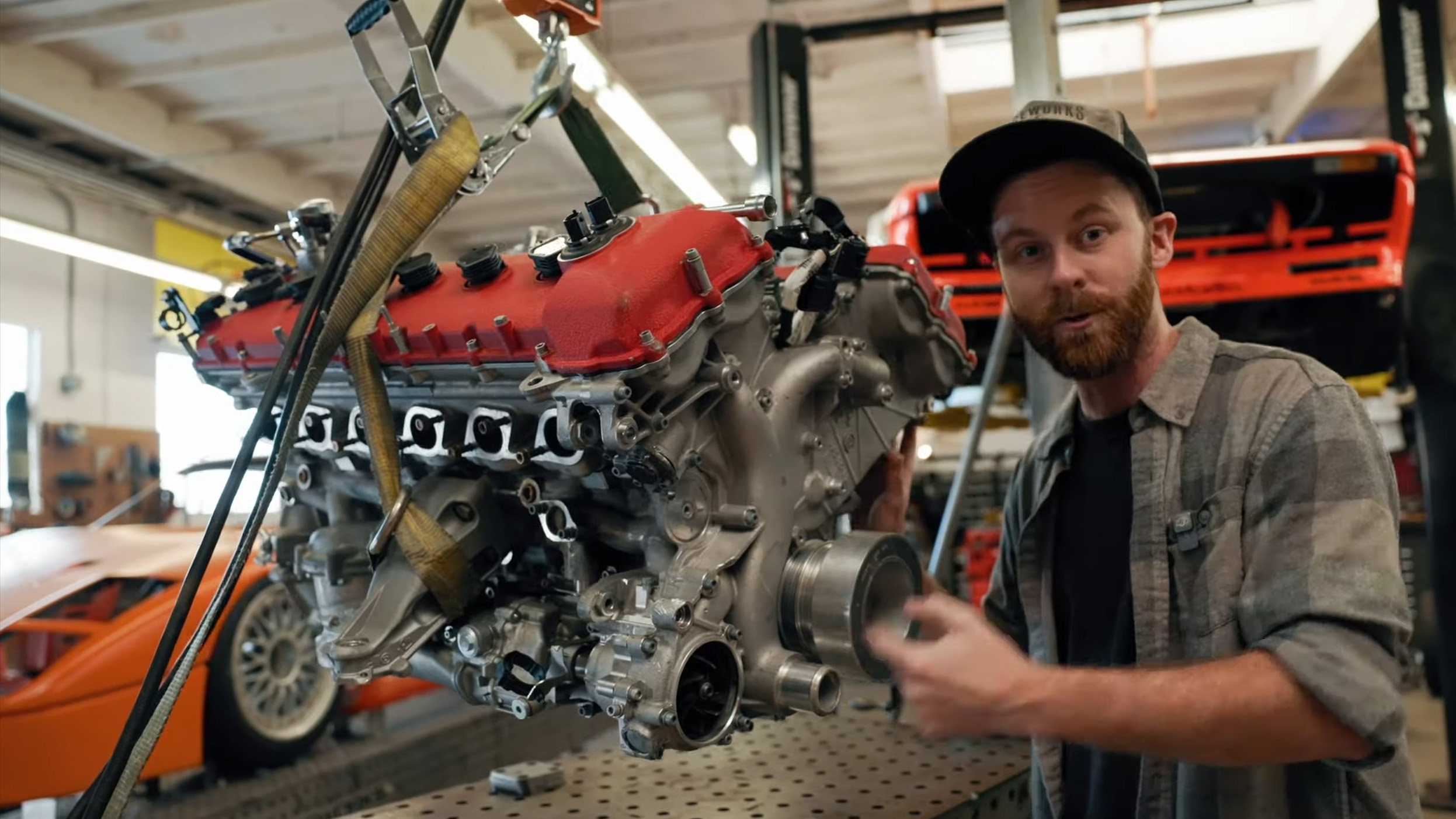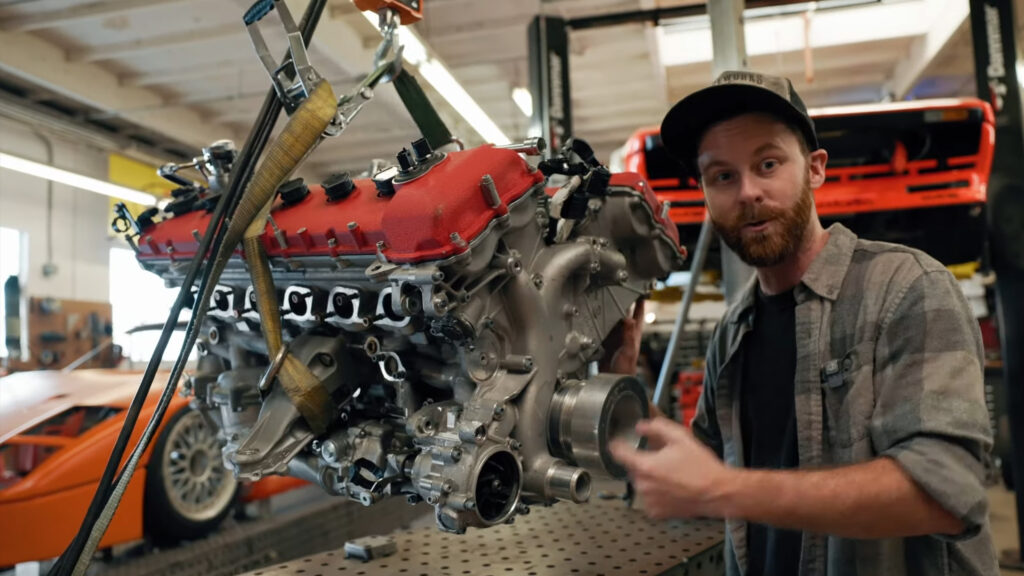
What does it take to build a Ferrari F40 from nearly scratch? That’s what StanceWorks’ Mike Burroughs is finding out, to the entertainment of enthusiasts everywhere. It took months for Burroughs to acquire all the body panels to form the shell of his F40, and for his latest video, he clued us in on what will power it. Unlike his Honda K-swapped “244 GTK,” this one’s very much staying in the family.
For the F40, Burroughs and his crew flew all the way to Munich to buy an F140, a V12 that will indeed be very familiar to Ferrari fans. First created for the Enzo, where it displaced six liters and made 660 horsepower with an 8,200 rpm redline, the example StanceWorks secured is a “GA” variant, the kind that was used more than a decade later in the 812 Superfast.
From the factory, the 6.5-liter F140-GA made 800 hp and 530 lb-ft of torque, revved to 8,500 rpm, and was purportedly the most powerful naturally aspirated engine ever built for a production car when it debuted in 2018. We called it “one of the best engines of all time,” and it apparently cost $94,000 new. This one was yanked from an 812 that had crashed after just 609 miles, but looks hardly worse for wear.
With the deal done and the engine safely delivered to its new home, Burroughs takes us through his plans. While he says he doesn’t intend to turbocharge it—at least, not yet—he will make many alterations to the V12 for his “F40 Evo.” The F140-GA’s complex, computerized high-pressure fuel system will be replaced with old-fashioned port injection, for ease of tuning. Independent throttle bodies, 6-in-1 headers, and a conversion to run on E85 fuel are in its future, too, and it will be mated to a custom Holinger sequential manual transmission with straight-cut gears, similar to the one used in the Brabham BT62.
In the end, it should easily double the 470 horsepower of the F40’s original F120A V8, while weighing considerably less. Sure, the F120A was a 2.9-liter mill, but as Burroughs explains from his experience working on the GTK, that motor in its naturally aspirated F106 guise weighed around 850 pounds fully dressed. The F40’s twin-turbo version would’ve been even heavier. This particular F140 doesn’t yet have an alternator, intake, or manifolds, but it weighs 447 pounds, which is still pretty dang light.
All in all, this build is shaping up to be something quite special. It’ll take a very long time before it’s anything resembling “complete,” of course, but that’s the fun of this stuff, and we’re all sure to learn a great deal through the journey. In fact, Burroughs says he acquired a second F140 in much poorer shape to use for prototyping. He also says we won’t have to wait until the V12 is fully situated in the F40 to hear it sing.
Got tips? Send ’em to tips@thedrive.com


